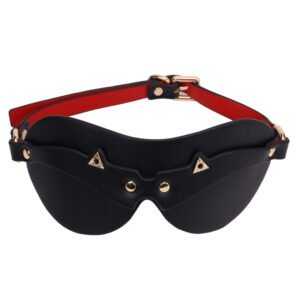What is the Difference Between TPE, TPR, Silicone, and PVC Sex Toys?
July 8, 2025 by
ellenyi@adultstoysgd.com
Product Knowledge📌 I collected the information below over three days.
As people become more concerned with new sensations and experiences in sex toys, understanding their materials is essential. Today, we’ll explore the differences in hardness and raw materials used in:
- Silicone Sex Toys
- TPR Sex Toys
- TPE Sex Toys
- PVC Sex Toys
❓ Are you unsure which material is best for your needs?
Choosing the right material for your silicone dildo, TPE dildo, or PVC dildo is crucial for comfort, safety, and durability. With so many options, it’s easy to feel overwhelmed.
This article will break down the pros and cons of these four materials, helping you make an informed decision.
📊 Hardness Levels in Sex Toys
Different toys require different softness levels:
-
Firmer Toys (5-20 Shore A):
- Silicone dildos
- Cock rings
- Clitoral vibrators
-
Ultra-Soft Toys (-5 to -15 Shore A):
- Men’s masturbators
- Pocket pussies
- Silicone ass toys
🔧 Processing Methods:
- Injection molding for smaller toys.
- Pouring for larger items like sex dolls.
Now, let’s compare PVC, TPE, TPR, and silicone in detail.
🔵 PVC Sex Toys
(Polyvinyl Chloride – A synthetic resin)
✔ Advantages:
- 💰 Low cost & vibrant colors.
- 🔥 Can be softened to Shore A0 hardness.
✖ Disadvantages:
- 👃 Strong odor (due to plasticizers like phthalates).
- ⚠️ Potential toxicity – not ideal for prolonged use.
- 🏷️ Mostly budget options; high-end brands avoid PVC.
🟡 TPE Sex Toys
(Thermoplastic Elastomer – Eco-friendly & soft)
✔ Advantages:
- ✋ Softer than silicone – great for masturbators & dolls.
- 🌿 Non-toxic (free from phthalates, NP, PAHS).
- 🌽 Often blended with cornstarch to reduce stickiness.
✖ Disadvantages:
- 🔥 Low heat resistance (degrades at 130°C–150°C).
- ☀️ UV-sensitive – may discolor outdoors.
🟠 TPR Sex Toys
(Thermoplastic Rubber – Affordable alternative)
✔ Advantages:
- 💲 Budget-friendly & eco-safe (no heavy metals).
- ♻️ Often used as a silicone/PVC substitute.
✖ Disadvantages:
- 👐 Slightly sticky texture.
- ❌ Poor heat resistance – may deform easily.
⚪ Silicone Sex Toys
(Premium material – Safe & durable)
✔ Advantages:
- ❄️🔥 Extreme temperature resistance (-100°C to 305°C).
- 🧼 Antibacterial & easy to sterilize.
- ⚡ Great insulation – ideal for vibrators.
✖ Disadvantages:
- ⏳ Longer production time.
- 💸 Higher cost than TPE/TPR/PVC.
- ♻️ Non-recyclable after production.
🎯 Conclusion: Which Should You Choose?
| Material | Best For | Heat Resistance | Price | Safety |
|---|---|---|---|---|
| Silicone | Premium toys (dildos, ass toys) | ★★★★★ (200°C–300°C) | $$$$ | ⭐⭐⭐⭐⭐ |
| TPE/TPR | Masturbators, budget toys | ★★☆ (130°C–150°C) | $$ | ⭐⭐⭐☆ |
| PVC | Low-cost options | ★☆☆ (Varies) | $ | ⭐⭐☆ |
✅ For safety & durability: Choose silicone sex toys.
✅ For affordability: TPE/TPR sex toys are decent.
⚠️ PVC toys are cheap but less safe.
✨ Final Tip: Always check for body-safe certifications when buying!
🔎 Want More Details?
Let us know if you’d like a deeper comparison!
Latest Articles

September 25, 2025
Why Does Wearing a Blindfold Make Intimacy So Exciting?
(🔍 Problem) Have you ever felt like your intimate life has fallen into a predictable routine? That spark of novelty

September 24, 2025
Why Do People Actually Enjoy Being Spanked?
❓ The Problem Have you ever scrolled through a forum or overheard a conversation about spanking and felt a little…

September 23, 2025
Why Is a Spanking Paddle Your Next High-Margin Product?
🔍 (P) Problem: As an adult product wholesaler or retailer, you’re constantly searching for new categories that promise high-profit margins
September 22, 2025
The Ultimate B2B Guide to Remote Control Sex Toys: Everything Wholesalers and Retailers Must Know
Are you a wholesaler or retail buyer watching the SexTech market explode, feeling the pressure to stock remote control sex


